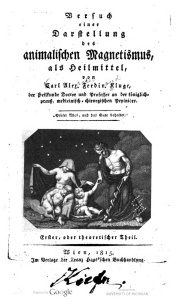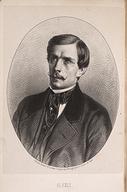Carlos S. Alvarado, PhD, Research Fellow, Parapsychology Foundation
In a recently published article Etzel Cardeña discussed the historical and contemporary importance of hypnosis in the study of consciousness, including ESP. The article is entitled “Hypnos and Psyche: How Hypnosis Has Contributed to the Study of Consciousness” (Psychology of Consciousness: Theory, Research, and Practice, 2014, 1, 123–138; for reprints write to the author: etzel.cardena@psy.lu.se).
Here is the abstract:
“The field of hypnosis anticipated the current interest in consciousness and has contributed in many ways to its conceptualization and research. This paper is divided into 3 sections. The first describes how hypnosis has enriched the study of alterations of consciousness, considered as dynamic processes subject to important individual differences. This section also considers how hypnosis offers an expanded but cautious view of human potentialities, including the possibility of anomalous cognition. The second section argues that descriptions of alternative selves or sets of mental processes, central to the hypnosis literature, provide insights into contemporary discussions of dissociative and nonconscious processes and the constructive nature of identity. The final section focuses on how hypnosis has emphasized sociocultural interactions, helping illuminate the intersubjective construal of conscious experience. Far from being an outdated set of theories, techniques, and data, hypnosis has much to offer to our understanding of consciousness.”
 The author presents many fascinating examples from the history of the field. For example, he writes that “the hypnotic state can be analyzed according to varying levels of depth. An early categorization of magnetic somnambulism described six levels—waking state with increased warmth, half-sleep, inner darkness (sleep and insensitivity), inner clarity (perception through the body), self-contemplation (the ability to accurately see one’s body and those of others), and universal clarity (perception unconstrained by time or space)—with the latter levels attainable by very few people (Kluge, 1811 . . . ) . . . Incidentally, this categorization overlaps considerably with that for the highly researched medium Mrs. Piper, whose initial mediumship state was ‘dreamily conscious of the sitter, and dreamily conscious of ‘spirits’ (followed by a) fuller and clearer consciousness —we may call it her subliminal consciousness—which is in direct relation . . . not so much with our ordinary physical world as with ‘another world’ (culminating in) subliminal consciousness (in which the medium) withdraws completely from the control of her body and takes her supraliminal consciousness (i.e., the conscious mind) with it’ ” (Hodgson, 1898 . . .).
The author presents many fascinating examples from the history of the field. For example, he writes that “the hypnotic state can be analyzed according to varying levels of depth. An early categorization of magnetic somnambulism described six levels—waking state with increased warmth, half-sleep, inner darkness (sleep and insensitivity), inner clarity (perception through the body), self-contemplation (the ability to accurately see one’s body and those of others), and universal clarity (perception unconstrained by time or space)—with the latter levels attainable by very few people (Kluge, 1811 . . . ) . . . Incidentally, this categorization overlaps considerably with that for the highly researched medium Mrs. Piper, whose initial mediumship state was ‘dreamily conscious of the sitter, and dreamily conscious of ‘spirits’ (followed by a) fuller and clearer consciousness —we may call it her subliminal consciousness—which is in direct relation . . . not so much with our ordinary physical world as with ‘another world’ (culminating in) subliminal consciousness (in which the medium) withdraws completely from the control of her body and takes her supraliminal consciousness (i.e., the conscious mind) with it’ ” (Hodgson, 1898 . . .).
In a section discussing human potentialities Cardeña includes ESP. He writes:
“With regard to the hypothesis that consciousness may be at least partly independent of the spatial/time constraints of the senses, although most of the older reports of mesmerism/hypnosis are of questionable evidential validity, even during that period there were some careful observations that cannot be dismissed summarily.” Here he gives the example of the phenomena of Alexis Didier and Pierre Janet’s studies of the induction of trance at a distance with Léonie Leboulanger.
But he also discusses more recent developments: “During the 20th century, parapsychological studies controlling for confounds such as sensory leakage and random guessing evaluated the evidence for a potential hypnosis-psi link. A literature review of studies on hypnosis and psi concluded that there was a clear relation and that hypnosis seemed to be most effective with trained participants who had a close relationship with the hypnotist (Van De Castle, 1969). More systematic later meta-analyses found that in 16 of 20 studies a hypnosis condition produced better results than a nonhypnosis condition, and that out of 19 studies, hypnosis was related to significantly higher scores than mean chance expectation in 9 studies and nonsignificantly better in 6 other studies; the results of these analyses were highly significant and methodological flaws were not found to be related to the results (Schechter, 1984; Stanford & Stein, 1994) . . .”
However, and regardless of a few examples of recent research, “results on a potential hypnosis-psi link have been inconsistent, and we need more hypothesis-driven programmatic research taking into account hypnotizability and possible alterations of consciousness during the sessions.”
Cardeña has much to say about other issues, such as dissociation and non-conscious processes. He also pays attention to the relationship between the researcher and the participants, something that should be of concern not only to social psychologists, but to any researcher involved in work with human participants. The author concludes that “the study of hypnotic phenomena, which involve sociocultural, cognitive/phenomenological, personality, affective/relational, and neurophysiological changes, has developed dynamic models of how these factors affect consciousness.” There is no question that Cardeña has made a good case for the importance of hypnosis for psychology.
An advantage that I see in the use of hypnosis is that it allows us the opportunity to induce with all kinds of phenomena observed in naturalistic settings. An example is the intentional production of identity states, as seen in recent work with gender identity (Cox, R. E., & Barnier, A. J. (2013). Shifting self, shifting memory: Testing the self-memory system model with hypnotic identity delusions. International Journal of Clinical and Experimental Hypnosis, 61, 416–462). Hypnosis could be used to induce subconscious creations, such as the writing of literature and other forms of artistic expression, and the creation of stories and scenarios relevant to non-veridical aspects of mediumship and the recollection of previous lives. This could contribute much to the empirical study of the capabilities of the subconscious mind. Similarly, there could be studies of state-specific memory and the formation of alternate personalities, following on the old work of Pierre Janet.
Furthermore, much more could be done to induce out-of-body experiences, as suggested by Hornell Hart and others years ago, which could involve tests of veridical perception. Such work could focus on hypnotic virtuosi, and, as Cardeña has discussed elsewhere, needs to consider different degrees of hypnotic susceptibility in the sense that highly suggestible individuals may show different patterns of response to hypnotic suggestion, and consequently to the induction of particular phenomena.




Hi Carlos!
Now with the evidence (continuing to trickling-in), of how much our unconscious functioning of our ‘Implicate’ and ‘physical’ selves – down even into below cellular levels can effect our processing. It is more important than ever that we deepen our understanding of our less-than-obvious, deep-level of functioning.
Those with difficulty understanding (and daring to comprehend), the models of quantum consciousness should especially want to understand these dynamics! But, they usually won’t, because they are too afraid of introspection of their safe, little, private worlds.
The deep erroneous messaging of their unconscious also will prevent them from seeing and even experiencing ‘expanded consciousness’.
So, we can only echo: ‘For those who have ears to hear, let them hear …’
Cheers and Best Wishes!
Oooops! An addendum, Carlos!
Anyone who has read the very thought provoking book: “First Sight” by Dr. James Carpenter will see who his ideas fit into this set of questions regarding the ‘unconscious’ and hypnosis.
Cheers and thanks for your great work!